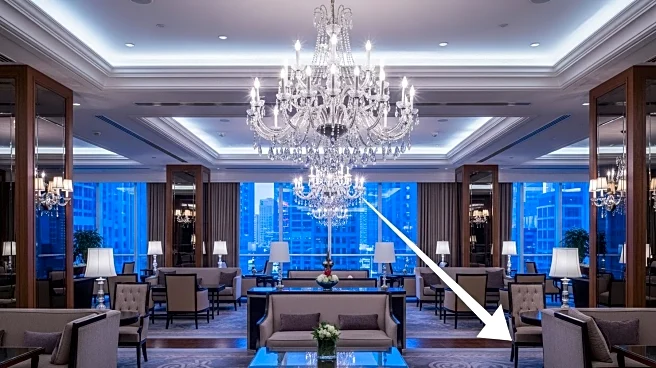What's Happening?
The U.S. hotel industry experienced a decline in revenue per available room (RevPAR) during the week ending September 13, 2025, marking the largest decrease in the past eight weeks. This decline was primarily driven by falling occupancy rates, which have been a consistent trend since April, with only two weeks of exceptions. The average daily rate (ADR) remained stagnant, contributing to the overall decrease in RevPAR. The Top 25 Markets (T25) saw significant weekday RevPAR declines, with six markets experiencing double-digit decreases, including Orange County, Atlanta, Houston, Las Vegas, San Diego, and Washington, D.C. The decline in group demand was a major factor, with a 5% drop in weekly group demand across luxury and upper upscale class hotels. Despite these challenges, some markets like New York City, Phoenix, Boston, Dallas, and San Francisco reported RevPAR gains driven by rising ADR.
Why It's Important?
The decline in RevPAR is significant as it reflects broader challenges within the U.S. hospitality industry, particularly in major markets. Falling occupancy rates and stagnant ADR indicate potential economic pressures and changing consumer behaviors. The decrease in group demand suggests a shift in business travel and event planning, which are critical components of hotel revenue. This trend could impact hotel profitability and influence future pricing strategies. Markets that reported gains highlight the importance of strategic pricing and demand management, offering insights into potential recovery paths for other regions. The ongoing decline in RevPAR could have implications for employment within the industry and affect related sectors such as tourism and local businesses.
What's Next?
Looking ahead, the hospitality industry may face continued challenges, especially with upcoming events like Rosh Hashanah potentially affecting travel patterns. Hotels may need to adjust their strategies to address the persistent decline in occupancy and group demand. Monitoring economic indicators and consumer confidence will be crucial for predicting future trends. Stakeholders, including hotel operators and investors, may need to explore innovative solutions to attract guests and improve occupancy rates. The industry might also see increased focus on marketing and promotions to boost demand during traditionally slow periods.
Beyond the Headlines
The decline in RevPAR raises questions about the long-term sustainability of current business models in the hospitality industry. Ethical considerations regarding pricing strategies and customer satisfaction may come to the forefront as hotels navigate these challenges. Additionally, the cultural impact of changing travel behaviors could influence how hotels market themselves and engage with guests. The industry may need to adapt to evolving consumer expectations, emphasizing experiences and value to maintain competitiveness.













